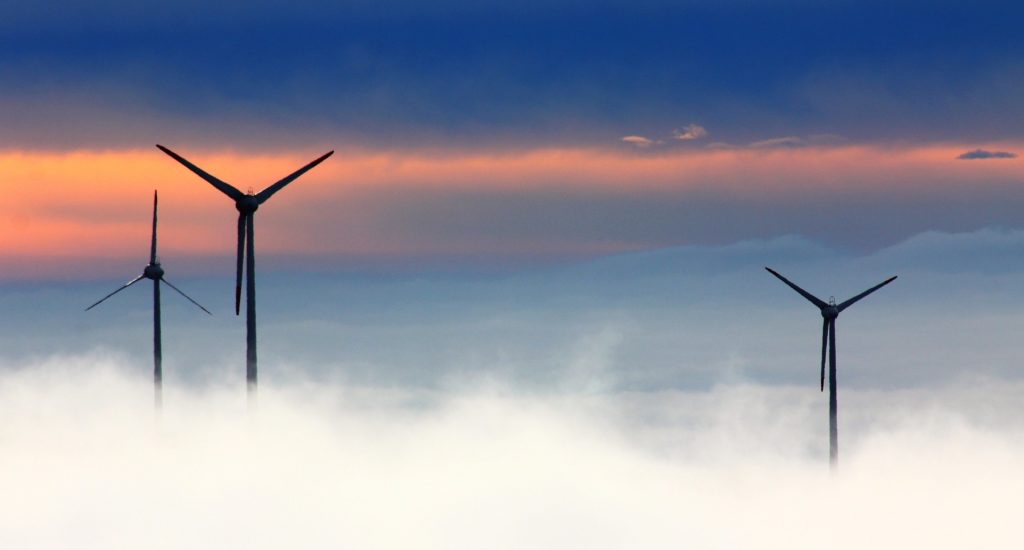India can become a world leader in green hydrogen – if it connects industry to the grid

The University of Exeter is hosting the ASME’s 5th International Offshore Wind Technical Conference (IOWTC 2023) on 18-19th December 2023.
Grid-connected green hydrogen and ammonia can help India meet its growing energy demand and clean energy targets, according to new analysis.
Leading researchers are using pioneering economic modelling techniques to identify pathways for clean energy transitions in emerging economies.
Their new paper – focused on India – finds that green hydrogen, and its product green ammonia, could make up roughly 25% of India’s electricity demand in 2050 by greening heavy industries such as steel, shipping, fertilisers and oil refining.
The model also predicts that a grid-connected green hydrogen system will result in a drastic reduction in costs for consumers: from $4-$5/kg for green hydrogen today to under $1/kg in 2050.
The research, carried out by the University of Oxford, is part of the University of Exeter-led EEIST project.
Currently in India, concerns regarding the reliability of energy supply and high connection charges deter industrial energy customers from connecting to the grid. If this continues, it will lead to ‘islanded’ green hydrogen and ammonia facilities that are not connected to the grid.
Compared to the ‘island infrastructure’ option, a grid connection is better in terms of:
- Security of supply; reducing the needs for imported energy and the amount of investment needed.
- Affordability of electricity; reducing the need for high tariffs on industry energy users to pay for subsidies for residential and agricultural customers, giving industry a further boost.
- System resilience; improved storage can increase the use of renewables, as energy can be produced and store to respond to changes in the weather.
Lead author Zac Cesaro, from the University of Oxford, said: “The unexpected findings of this study are the sheer magnitude of electrolysis and ammonia capacity needed in India, and the corresponding benefits which could be gained if these plants connect to the grid and operate dynamically.
“This opportunity will likely be missed unless there is policy intervention in the near term to steer towards this future configuration.”
Green hydrogen – which can be used to produce or store energy – is obtained by electrolysis of water, and is powered entirely by renewable energy.
Ammonia can also be used to produce or store energy, and is referred to as “green ammonia” if production is 100% renewable and carbon-free.
Anupama Sen, also from the University of Oxford, said: “Hydrogen can contribute to short-term grid balancing, and ammonia to long-term storage, helping to bring more solar and wind energy into the grid.
“By producing more green hydrogen and ammonia when there is lots of renewable energy and less when the supply is short, a grid-connected approach can take electricity from the grid flexibly.
“By burning hydrogen or ammonia in gas turbines when needed, it can also bring electricity back into the grid on demand, although the usefulness of this seems limited.”
This research was produced using a Complexity-Extended Energy System Model.
These models are more advanced than traditional energy models because of their ability to represent the interaction between different industries, how technology develops over time, and their use of more precise weather data.
This kind of modelling can support governments around the world to make more detailed decisions about the transition to clean energy.
Research also published today by the EEIST project uses a similarly cutting-edge approach to explore the effect of China’s energy transition on jobs and taxes linked to the thermal coal industry.
Using asset-level data, the analysis finds that the transition away from coal could be net-positive for China’s public finances, even without accounting for climate change.
Also, under current policies, employment in the coal sector will continue to decline due to improving productivity.
Coal jobs will disappear even more rapidly under stronger energy and climate targets.
Both reports will be launched at a side event during New York Climate Week on ‘Advancing Net-Zero through Just Energy Transitions’.
To read the reports and find out more about EEIST, visit https://eeist.co.uk/
The Economics of Energy Innovation and System Transition (EEIST) project develops cutting-edge energy innovation analysis to support government decision making around low-carbon innovation and technological change. By engaging with policymakers and stakeholders in Brazil, China, India, the UK and the EU, the project aims to contribute to the economic development of emerging nations and support sustainable development globally. EEIST is jointly funded through UK Aid by the UK Government Department for Energy Security & Net Zero, and the Children’s Investment Fund Foundation (CIFF).



